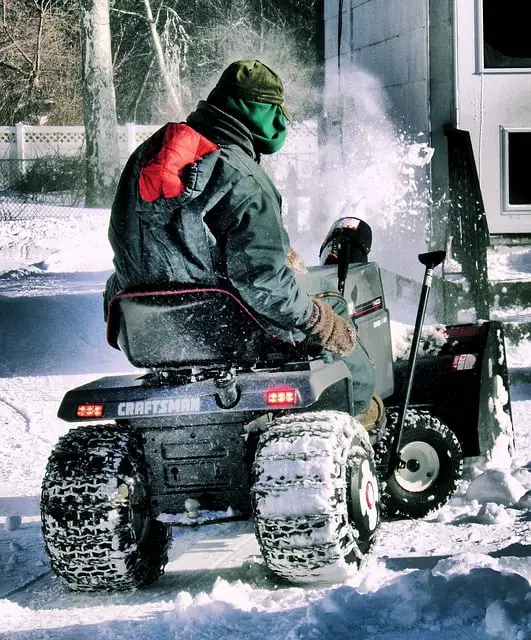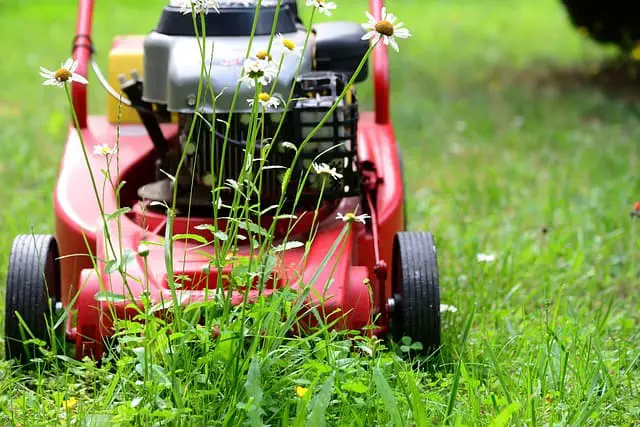For uneven ground, hover mowers are generally the best option. They are inexpensive and easier to maneuver than standard mowers, as they work by creating a cushion of air between the mower and the lawn. That said, they are more ideal for medium-sized lawns, so for larger lawns a riding mower or Zero turn solution would be better options.
In this article we’ll go over some of the most common questions that are being asked about leveling and uneven and bumpy lawn. Let’s take a look at what everyone want to know about this process!
How do you mow an uneven lawn?
For uneven lawns, it is recommended that you raise the deck of the mower before you reach more difficult areas. This allows you cut without worry of ‘scalping’ uneven areas of your lawn. Hover mowers are also an excellent option, since the air that the mower uses to stay aloft helps to ensure that it’s always level.
Which mower is best for cutting uneven or hilly terrain?
Zero turn mowers are an excellent choice for hilly and uneven terrain, performing better than standard riding mowers due to being able to more efficiently follow the edging of the lawn. That said, for fairly steep inclines a push mower is a better option, as the caster-wheels of Zero turn mowers can be a problem in this sort of terrain.
Which lawn mower is best for hills?
With hills, generally a push mower is going to be your best option. Riding mowers have a chance of tipping if not used carefully. With a push mower, you have more control, and you can cut back and forth across the hill, rather than going up or down, and get the job much more safely.
That said, if the hill is at less than a 15 degree angle, than a riding mower may be used safely.
How do you fix a bumpy lawn?
To fix a bumpy lawn, you need to be able to see the terrain better, so you should start by cutting the grass at a low setting. After this, you can rake through your lawn to remove the dead plant matter and this will show you what areas you’ll need to balance out.
You can apply some topsoil at this point in some of the lower areas and after this, you can reseed them and very soon you’ll have a nice, evened-out lawn.
How much does it cost to level a yard?
That will depend on a number of factors, such as slopes, the size of your lawn, and overall working conditions, just to name a few. As a ballpark figure, it’s likely to be a range of $500 up to $5000, depending on the complexity of the project.
Be sure to get more than one quote before you decide who to hire and to check their references. This will minimize costs while ensuring that you get professionally finished lawn.
How do you level an uneven backyard?
Leveling an uneven backyard is going to require mowing the grass low so that you can then clean out the area by raking and bagging the grass and any detritus in the yard. After this, you can fill in the areas that need it the most with topsoil and reseed those areas.
Alternately, there are services you can hire to flatten the yard and to manage existing slopes, which may cost between $1000 and $3000 on average.
How do you level a Rototill lawn?
The Rototill will break up the soil, but you’re definitely not done at this point. You need to assess the grade of the yard so that you may determine where the middle-area is. From there, it is a slow process of moving Rototilled soil from your wheelbarrow throughout the rest of the lawn, so that you may level it with raking.
How do I even out my lawn?
To even out your lawn, you’ll first need to mow it and then you will need to remove the thatch. From this point, you’ll be able to see the areas you need to focus on first. By mixing up your topsoil, compost, and some sand, you can fill the sunken parts of your lawn after digging up the grass there.
After this, you’ll need to even out the lawn with a bit of raking and you may then reseed it.
What equipment is needed to level a yard?
For levelling a yard, you will need a an assortment of rakes to begin with. A hand rake, a leaf rake, and a landscape rake are good to begin with. You’re also going to need shovels, a wheelbarrow, and a large push broom.
With these basic items you should be able to get the job done nicely, it will just take a little time.
Can you lay sod on uneven ground?
Yes, you can lay sod on uneven ground, but it’s much better to take the time to even it out before doing this. Your lawn will look better in the long run and it’s not all that difficult to do – just time consuming.
It’s all a matter of clearing out the thatch after a good mow, filling the low areas with topsoil, and evening them out with a rake.
How do I slope my lawn?
As a general rule, sloping should consist of ensuring that the ground needs to be dropping approximately 2 to 3 inches for every ten feet of space, in all of the directions away from you house.
Understandably, that’s not always practical, so at the very minimum just be sure not to exceed more than 12 inches for every four feet while sloping your lawn.
What is the easiest way to level ground?
The easiest way to level ground is going to be mixing up your own fill dirt. This just requires a 50/50 mix of garden soil and sand, which you may then load into a wheelbarrow and distribute into the low areas to create an extra ½ layer of your fill dirt.
At this point, assess where the remaining dirt needs to go and you can reseed at needed.


